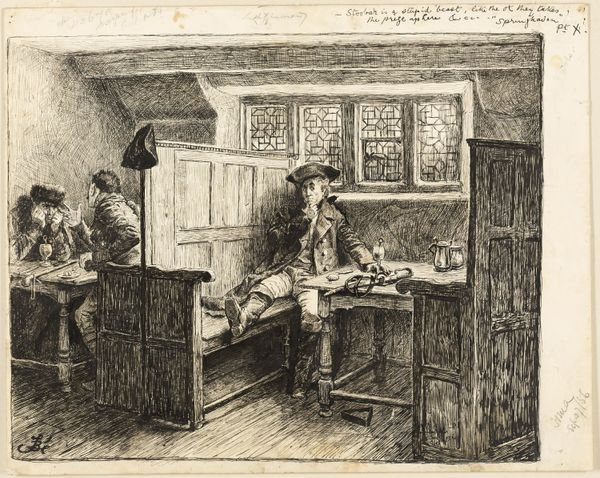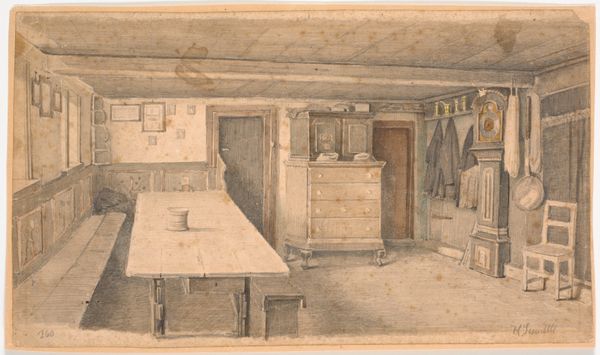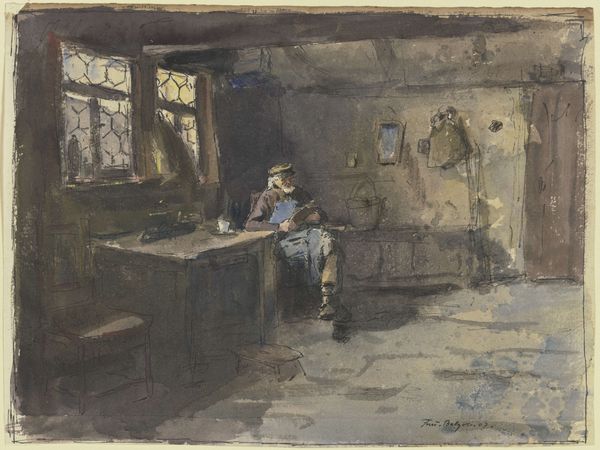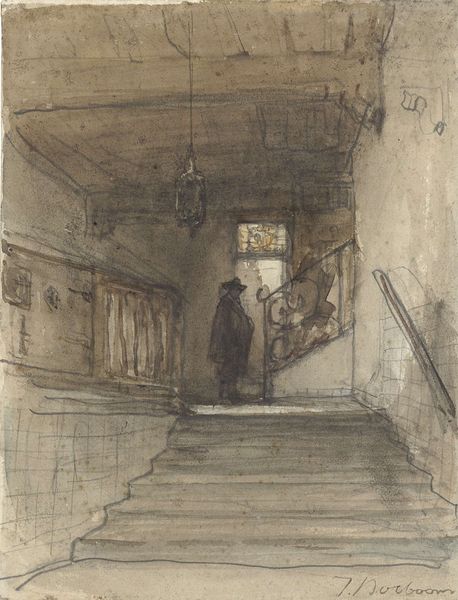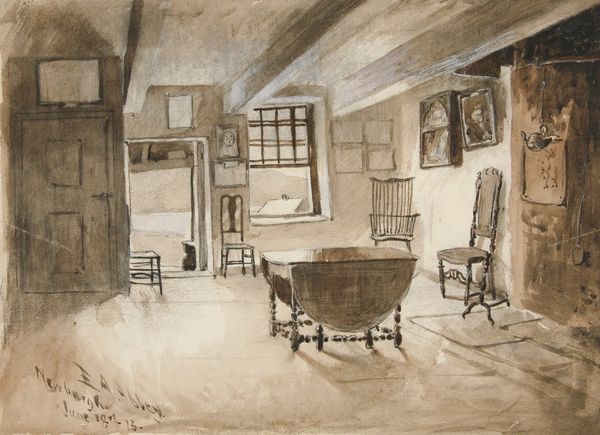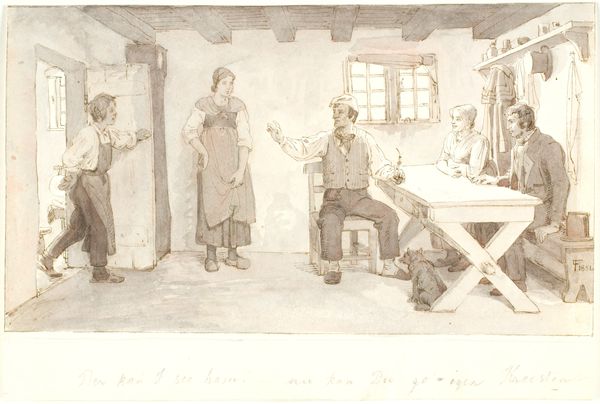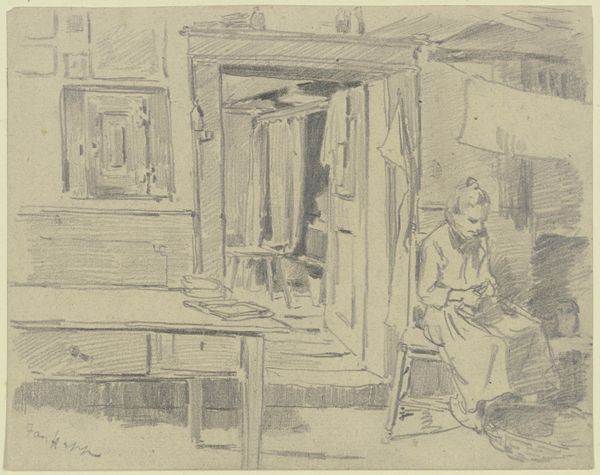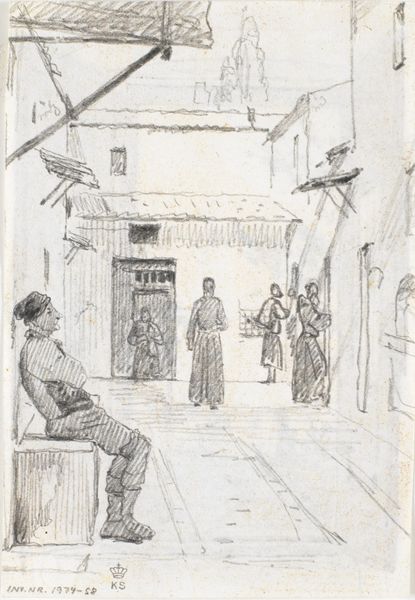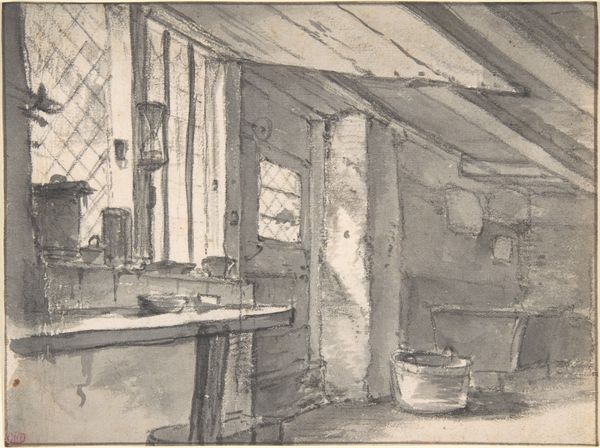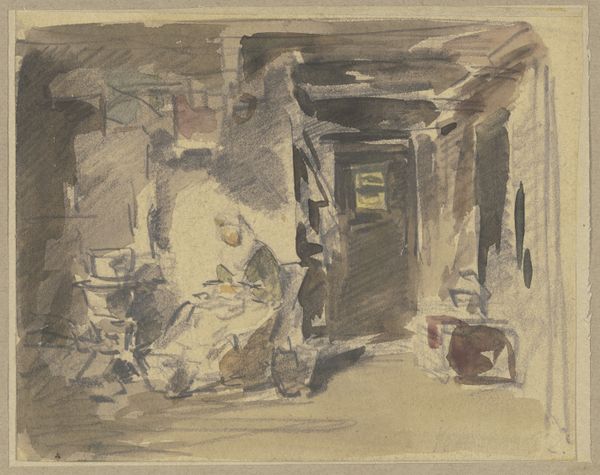
drawing, pencil
#
portrait
#
drawing
#
landscape
#
romanticism
#
pencil
#
genre-painting
Dimensions: 266 mm (height) x 402 mm (width) (bladmaal)
Curator: This pencil drawing by Martinus Rørbye, created in 1847, is titled "En bondestue på Samsø med en kone og tre mænd"—"A farmhouse on Samsø with a woman and three men." It’s currently housed at the SMK, the National Gallery of Denmark. Editor: It feels surprisingly intimate for a genre scene. The composition draws you right into the room, but the light, it’s almost harsh, creates a subdued mood. I notice right away the detail given to the furniture: the cupboard, the clock... they appear very carefully crafted. Curator: Yes, Rørbye was deeply interested in capturing the authentic details of daily life and regional cultures. In this piece, we see him focusing on the social life of the Danish countryside during a period of burgeoning national Romanticism. Notice how he positions the figures—it suggests particular social roles and gendered spaces within the household. Editor: Absolutely. And I find myself considering the labour that produced all of the materials we see—the woven cloth of the woman’s skirt, the wood used for the furniture, the very paper he drew on. What about the means of artistic production? A piece like this certainly wasn't accessible to everyone. Curator: That’s a keen observation. Artistic patronage was undeniably a factor, shaping not only Rørbye's career but also the broader art market in 19th-century Denmark. Such images contributed to a construction of national identity and an idealised, perhaps romanticized, view of rural life—one consumed largely by the urban middle classes. Editor: The stark contrasts intrigue me. Despite the muted tones, the composition uses varied textures of material. Even the pencil work has a roughness; it's about communicating more than just representation. Curator: Precisely. His art served a public function, visually defining a sense of Danishness through representations of its people and landscapes. The cultural politics surrounding the imagery promoted ideals of tradition. Editor: Ultimately, pieces such as this provide tangible artifacts reflecting the history of Denmark. You begin to understand the lived reality that informed what might now be thought of as ‘national identity’. Curator: It’s been fascinating to think about the intersections between artistic representation, the politics of national identity, and Rørbye's historical moment. Editor: I agree. Examining it materially helps ground those broader social narratives within the very stuff that constituted life for the people within that Danish farmhouse.
Comments
No comments
Be the first to comment and join the conversation on the ultimate creative platform.
